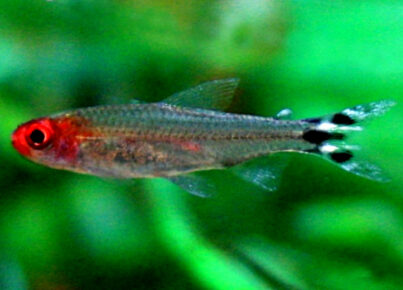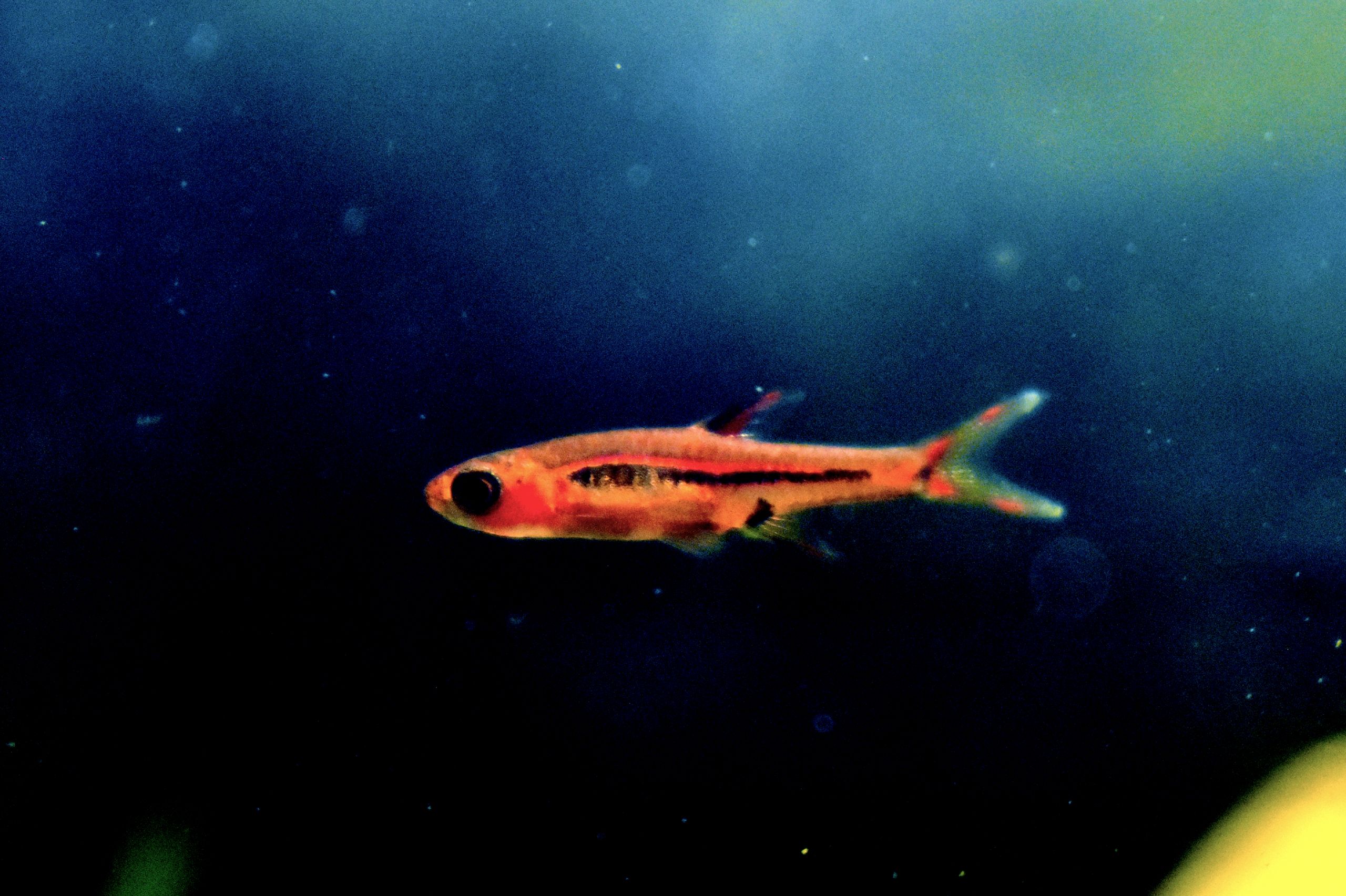This Article Contains a Amazon Affiliate Link
Fishkeeping is a wonderful hobby that has been practiced for centuries, way before it was even popular. Fishkeeping is a great hobby for both children and elders.
In this article, I will explain all the basics of freshwater fishkeeping: when you should start fishkeeping, how much it costs to start a freshwater aquarium, what to put in that freshwater aquarium, what fish you can keep, and much more.
Believe me, fishkeeping is a BIG hobby, but it’s easy to do if you know what to do. So, make sure you read the entire article so you can feel confident when you enter the pet store.

When Should I Start Keeping Freshwater Fish?
So, when exactly should you start keeping fish? Well, the answer is it depends, but it’s important to start studying as soon as possible so you can keep fish properly.
Of course, fishkeeping isn’t rocket science, but it’s important to know how to take care of fish. They are living organisms, after all.
How Much Does It Cost To Start a Freshwater Aquarium?
This is another hard question to answer saying there are just so many fish you can keep and tanks that you can buy, not to mention all the supplies that you may or may not need, but you can expect to spend at least $150-200 or more, but if you’re going to buy a 5-10 gallon aquarium, this is a good price range to expect.
Do note, however, that you are buying the tank, the fish, what goes in the tank, along with the fish’s food and the maintenance tools needed to keep the aquarium clean and your fish healthy. It may seem expensive, but it doesn’t seem quite as bad when you realize what you’re buying.
Is It Hard To Keep Freshwater Fish?
It really depends on what fish you keep, but if you buy beginner fish (I will talk more about that later in the article), it’s easy and a good hobby for first-time pet owners and hobbyists that don’t have a lot of time on their hands.
That being said, you still need to do daily maintenance for your aquarium to keep the tank and fish their best. I will also talk more about maintenance tools later.
What Should I Put In My Freshwater Aquarium?
So, you know how much you can expect to pay if you’re getting a 5-10 gallon fish tank, and you know a little bit more of what to expect when it comes to maintenance, but what kind of stuff do you put in your fish tank other than fish?
This is a great question, and it seems a LOT of people just don’t know what they can or can’t put in a fish tank. So, what can I put in my fish tank?
Well, almost every tank, unless it’s bare bottom (just water and fish, nothing else), consists of a substrate, plants, and décor. Let’s look at each one.
Substrate
The substrate is the stuff that’s on the bottom of your fish tank. This could be sand, gravel, or another substrate. What kind of substrate should you use, you ask? Well, that’s a hard question to answer, but you may want to use sand or a substrate that is specifically used for plants like Fluval Stratum.
Why I don’t recommend gravel is, unless you want a lot more maintenance or that you just can’t use Fluval Stratum or sand, then stay away from it.
Gravel, even though it may look nice, gets dirty quick. Luckily, we do have gravel vacuums (I will talk more about them later) which can help clean the substrate, but other substrates take a lot less maintenance than gravel.
Plants
Have you ever thought about putting live plants in your aquarium? You may have if you went to a pet store and came across their plants section, but did you ever really use them in your fish tank?
If you haven’t added live plants before in an aquarium, I highly suggest you do so. Not only can they help produce more oxygen, but they also grow and reproduce, unlike fake plants, and can actually make more plants if they are healthy.
If you want to add live plants to your aquarium, make sure you know what you’re doing. Unfortunately, I’m afraid that this article would be just a touch too long if I were to explain everything you need to know here, but if you want, you can watch this video by Prime Time Aquatics on Youtube.
Décor
And lastly, we have décor. This is what a lot of people use to decorate their tank. It may be a SpongeBob house, or it may be some fake coral, or perhaps a submarine, but I want to suggest something called driftwood.
You may or may not have heard of driftwood, but if you haven’t, it’s really just wood that you would find in a pond or creek. I suggest that you buy this in a store, just so you know that there isn’t anything that will hurt your fish later, like fungus or parasites.
If you want to add just a little more sparkle to your aquarium, you may want to add some larger rocks. This helps make the tank look nicer, and if you have herbivorous shrimp, they may hop on it to enjoy the algae that grow on it.
What Kind of Fish Can I Keep In My Aquarium?
Now, the question you are likely asking is, “What kind of fish can I keep in my aquarium?” There are a ton of fish that you can keep, but It’s important to know what kinds that don’t require too much maintenance so you know how to keep them. Trust me, I’ve learned the hard way, but I don’t want you to.
In this section, I will be talking about 5 fish that you can keep in your aquarium. As you read, pay attention to their ideal tank size, average life expectancy, preferred water temperature, and pH. All of this can impact what fish you plan on buying!
Betta Fish

Bettas are likely the second most popular fish in the United States, closely following the goldfish. And, it’s no wonder why they are. With their absolutely stunning looks and their hardiness, they make the ideal beginner fish.
Ideal Tank Size: 5-10 gallons
Lifespan: around 3-5 years
Water Temperature: 78-80 Fahrenheit, 25.5-26.6 Celsius
Ideal pH: 6.5-7.5
Neon Tetras

Neon Tetras are one of the most popular schooling fish thanks to their attractive looks and hardiness. Because they are schooling fish, a general rule of thumb is to get at least 6 individuals per tank.
Ideal Tank Size: 10 gallons for a group of 6
Lifespan: around 2-5 years
Water Temperature: 70-81 Fahrenheit, 21.1-27.2 Celsius
Ideal pH: 6.0-7.0
Guppies

Guppies are another popular fish for their beautiful colors and hardiness. Guppies do best in a group of 4 with a male to female ratio of 1:3. Guppies do not require a filter, though it’s ideal to keep the water quality high. Guppies do require a heater to keep the water temperature stable and in the ideal range.
Ideal Tank Size: 5 gallons for a group of 4
Lifespan: around 2-5 years
Water Temperature: 74–82 Fahrenheit, 23.3-27.7 Celsius
Ideal pH: 6.8–7.6
Cory Catfish

Cory catfish was one of the first fish I ever kept and they’re personally one of my favorites. Thanks to their wide variety of colors and sizes, you can keep them in a variety of tank sizes. If you are planning on keeping the average-sized cory catfish, which is about 2 inches in length, you should consider getting a 20 gallon aquarium. Other smaller kinds like pygmy cories can live in a 10 gallon.
Ideal Tank Size: 10-20 gallons for a group of 6 (depends on type)
Lifespan: around 5 years (some individuals live for much longer)
Water Temperature: 70-80 Fahrenheit, 21.1-26.6 Celsius
Ideal pH: 6.0-8.0 (varies based on type)
Tiger Barbs

Tiger barbs are also a favorite of mine for their beautiful yellow and black stripped pattern and their high activity level. Do note, however, that tiger barbs aren’t necessarily small fish, and they are schoolers, so a 20 gallon tank is ideal. I also want to say that tiger barbs are aggressive, so you may be better off without having any other species in the aquarium.
Ideal Tank Size: 20 gallons for a group of 6
Lifespan: around 5-7 years
Water Temperature: 70-80 Fahrenheit (78 is ideal), 21.1-26.6 Celsius (25.5 is ideal)
Ideal pH: 6.0-7.0
What Should I Feed My Fish?
So, now you have some ideas of what you can keep in your fish tank, the next question you may be asking is “What should I feed my freshwater fish?” This is a great question.
It really depends on the fish you keep, but most fish can eat pellets and flakes, though remember, this is not ideal, so if you can afford it, you may want to feed them frozen or live baby brine shrimp or bloodworms. Of course, I highly recommend that you study the fish you want to keep a little more in depth and see what they should eat.
Preparing Your Freshwater Aquarium For Fish
Now, once you have the tank set up, you may want to consider cycling your aquarium. Cycling an aquarium is essentially the process of where ammonia is reduced by bacteria and in turn makes the water safe for fish, but there is another theory that suggests that there isn’t even any such thing as a “cycle.”
This theory is that bacteria actually doesn’t break down ammonia. Instead a singled-celled organism called Archaea does. The theory also suggests that you should actually add rocks, twigs, and dead leaves from natural water sources to make the water safe for fish. I’m afraid that Archaea are both too controversial as to what kingdom they belong to and just too complex to talk about in this article, but if you’d like to learn more about them, I suggest studying some more yourself.
Do note, however, that I have not tested this theory, and you can’t be too careful when it comes to what you put in your tank, especially, if it’s from nature where parasites and bad bacteria are present. Just remember that it’s your choice and that you’re responsible for your own decisions. If you would like to learn more about this theory, I suggest you watch this video.
Basic Maintenance Tools That You Need
After you have made your aquarium and bought your fish, you need to learn how to maintain your aquarium. First off, you need an algae scraper. Algae is very common in freshwater aquariums, and it’s important to keep it under control with an algae scraper.
If you have live plants in the aquarium, you’re going to also need some plant clippers and large tweezers to move plants in the aquarium so you don’t have to use your hands.
If you have a substrate, you may need a gravel vacuum. Gravel vacuums help clean the gravel by sucking the waste from the gravel out of the aquarium. Even if you have sand or another substrate, a gravel vacuum will help clean the substrate. Do note, however, that if you have a lighter substrate like sand to never go too close to the the substrate with the gravel vacuum. Because the gravel vacuum is made for gravel, it will suck up the sand with the waste and cause a big mess that you just don’t want!
Conclusion
I hope you found this article helpful. I’m afraid I can’t talk about everything in fishkeeping, so I highly recommend to do some more research. Fishkeeping isn’t too hard, but it is important to know what to do so that you can keep the fish healthy.
So, what kind of fish do you plan to keep? Let us know in the comments below!






